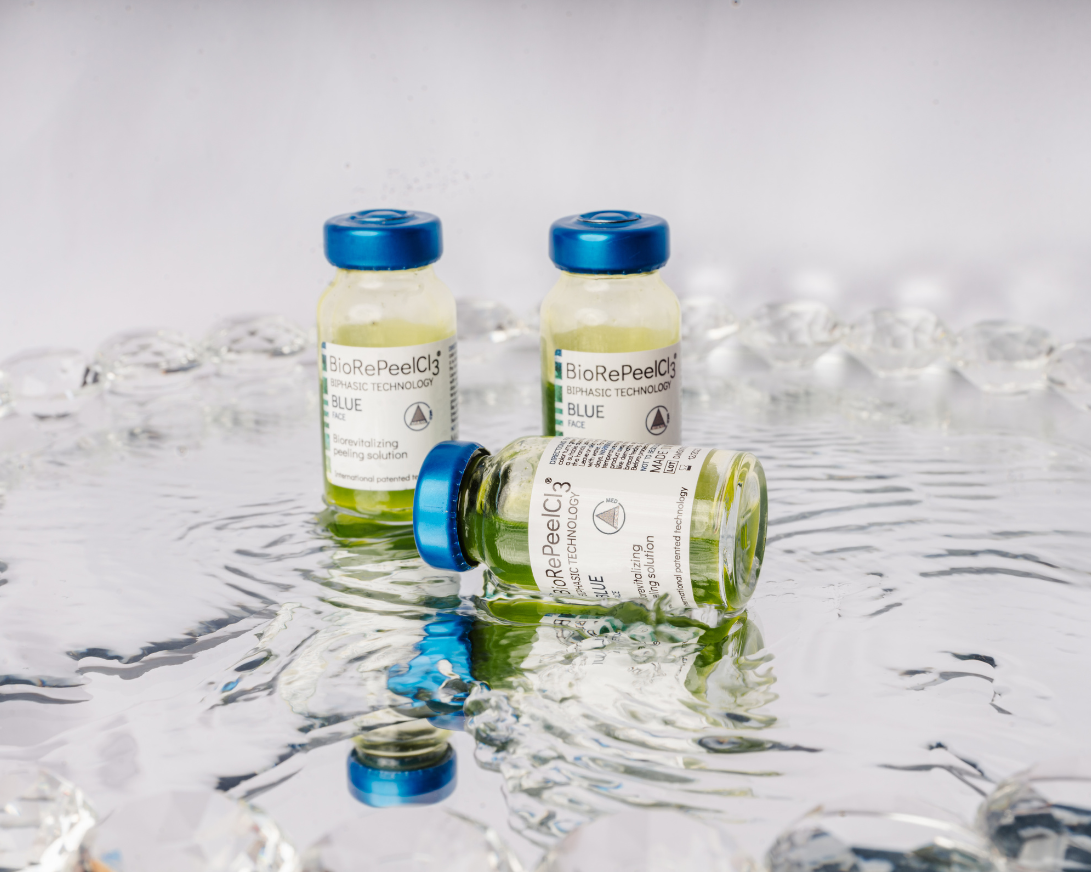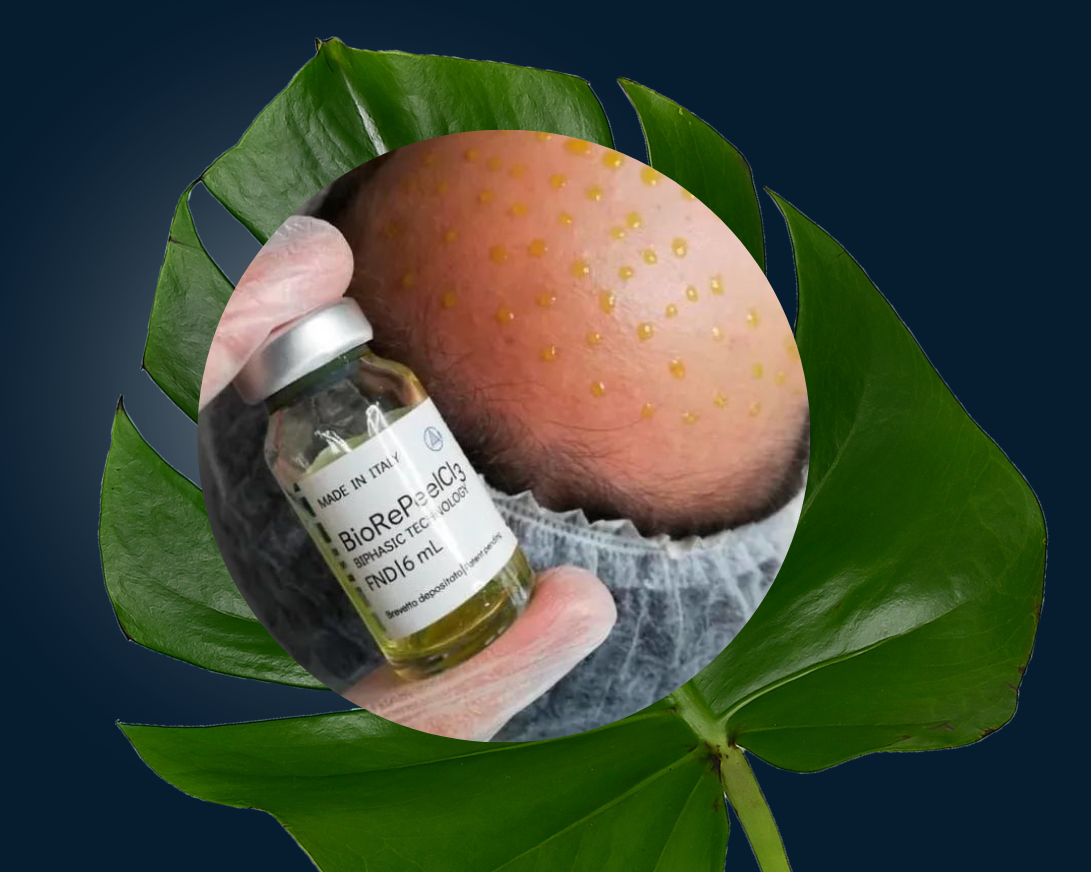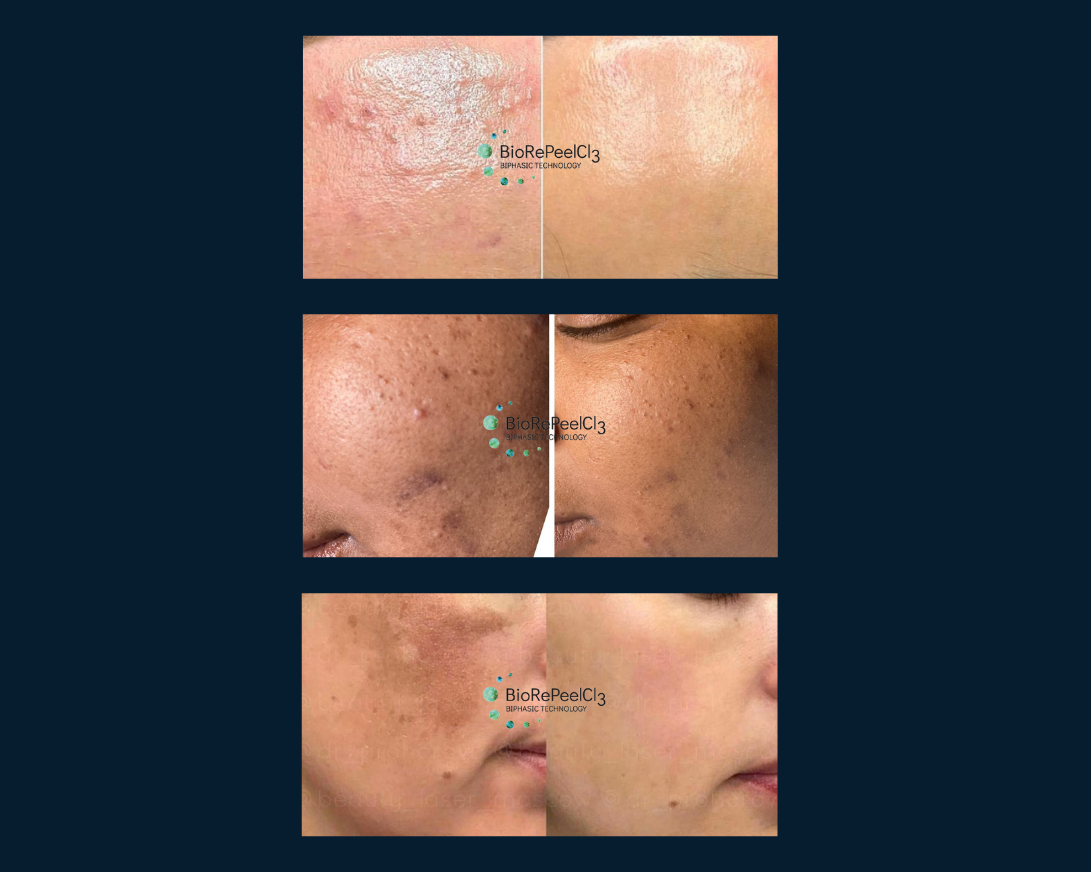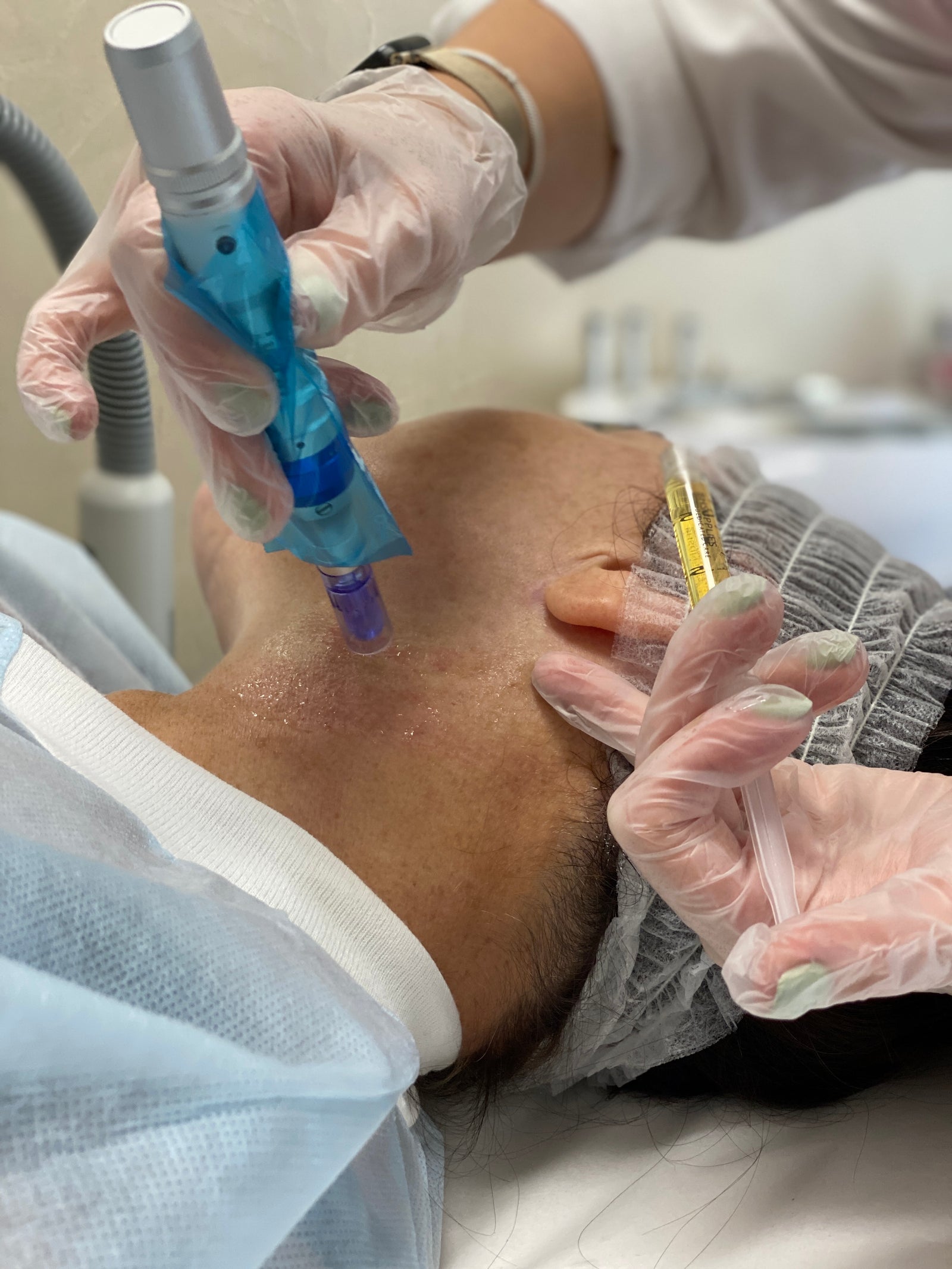At Aesthetic Allure, we are proud to be authorized providers of the latest chemical peel technology, known as the BioRePeelCl3® Peel.
BioRePeelCl3® is an innovative Italian-made chemical peel using patented 2-phase technology providing bio-stimulation and revitalization without any downtime or harsh peeling.
BioRePeelCl3® Peel.

BioRePeelCl3® Benefits.
transformative, stimulating, and rejuvenating
What is the BioRePeel Treatment?
The BioRePeel treatment leverages cutting-edge biostimulation technology, a process that effectively stimulates the synthesis of collagen and elastin within the skin, concurrently enhancing cellular turnover rates.
Distinguished by its innovative formulation, this treatment aids in the gentle yet thorough exfoliation of the epidermal layer by facilitating the dissolution of intercellular bonds within aged, deceased, or compromised cells. Consequently, this treatment engenders a micropeel effect, unveiling a rejuvenated stratum of skin that radiates with vitality, health, and luminosity.

Ingredients and Benefits.
This innovative potent formulation combines carefully selected key components to effectively address specific skin concerns.
TCA and Tartaric acid for improved skin texture, scar reduction, and addressing skin discoloration.
Salicylic acid to comprehensively address pore congestion and control excess oil production.
Lactobionic acid to enhance intracellular metabolism, promoting optimal skin health and vitality.
To fortify the formula, amino acids and essential vitamins, such as Vitamin C and Vitamin B2, are also added to boost antioxidant capacity on the skin.

The Process.
Following the makeup removal with a facial cleanse, the BioRePeel is carefully applied to the skin, accompanied by a noticeable tingling sensation. This sensation serves to stimulate the skin, initiating a rejuvenating healing process. Subsequently, the treatment is gently removed using water, after which a hydrating serum is applied, culminating with the application of SPF 50+ gel.
Notably, this peel is classified as a non-peeling peel, resulting in minimal downtime, possibly some mild redness. It is particularly well-suited for achieving a brighter, firmer complexion.
The BioRePeel Facial is 45 minutes & includes:
- Professional pH balancing cleanse.
- BioRePeel Chemical Peel Solution.
- Skin neutralization
- Professional Grade SPF
*Combine your BioRePeel Facial with Microneedling for enhanced results.

What Others Are Saying...
BioRePeelCl3® FAQ
commonly asked questions about the BioRePeelCl3®
Please refrain from using exfoliating products for 48 hours before your scheduled appointment. Additionally, avoid AHAs, BHAs, retinols, and self-tanning products for a week leading up to your appointment. To ensure the best results, please do not engage in waxing, hair removal, or hair bleaching for a full 14 days before your appointment. Lastly, it is crucial to steer clear of UV or direct sun exposure during the 14 days preceding your appointment.
Try to refrain from applying makeup for 24-48 hours after your appointment, if feasible. Additionally, for the 14 days following your appointment, it's best to avoid products containing AHAs, BHAs, and retinols. Steer clear of waxing, hair removal, or hair bleaching during this same 14-day post-appointment period.
For optimal results, avoid swimming and steam saunas for the first 14 days after your appointment. Furthermore, it's advisable to refrain from using sunbeds, engaging in tanning activities, or applying self-tanning products during this 14-day period following your appointment.
BioRePeel is considered a low-downtime peel, which means it typically doesn't lead to significant peeling post-treatment, unlike certain other TCA peels. Nevertheless, it's important to note that a mild, occasional peeling of certain areas might occur in some individuals. This is a natural response to the removal of dead skin and the skin's stimulated renewal process, and it should be expected as part of the normal healing process.
For an optimal BioRePeel experience, we advise beginning with a minimum of 4-6 sessions spaced approximately two weeks apart initially. After this initial phase, we recommend transitioning to monthly visits to effectively maintain your results.
You'll experience immediate results as your skin will exhibit a radiant glow, noticeably tighter pores, and a plumper appearance. BioRePeel is not only effective in delivering instant benefits but also serves as a treatment for long-term concerns, including acne, pigmentation issues, and signs of aging.
Chemical Peel techniques and solutions are FDA-approved and are considered a safe and effective procedure when done by an experienced and qualified professional. Chemical peel procedures have been around for many years and therefore have undergone rigorous testing and improvements over the years resulting in a trusted and effective non-invasive facial treatment.
What are You Waiting For?
Let's get in touch and schedule you a complimentary consultation to see if chemical peel facials are right for you.



